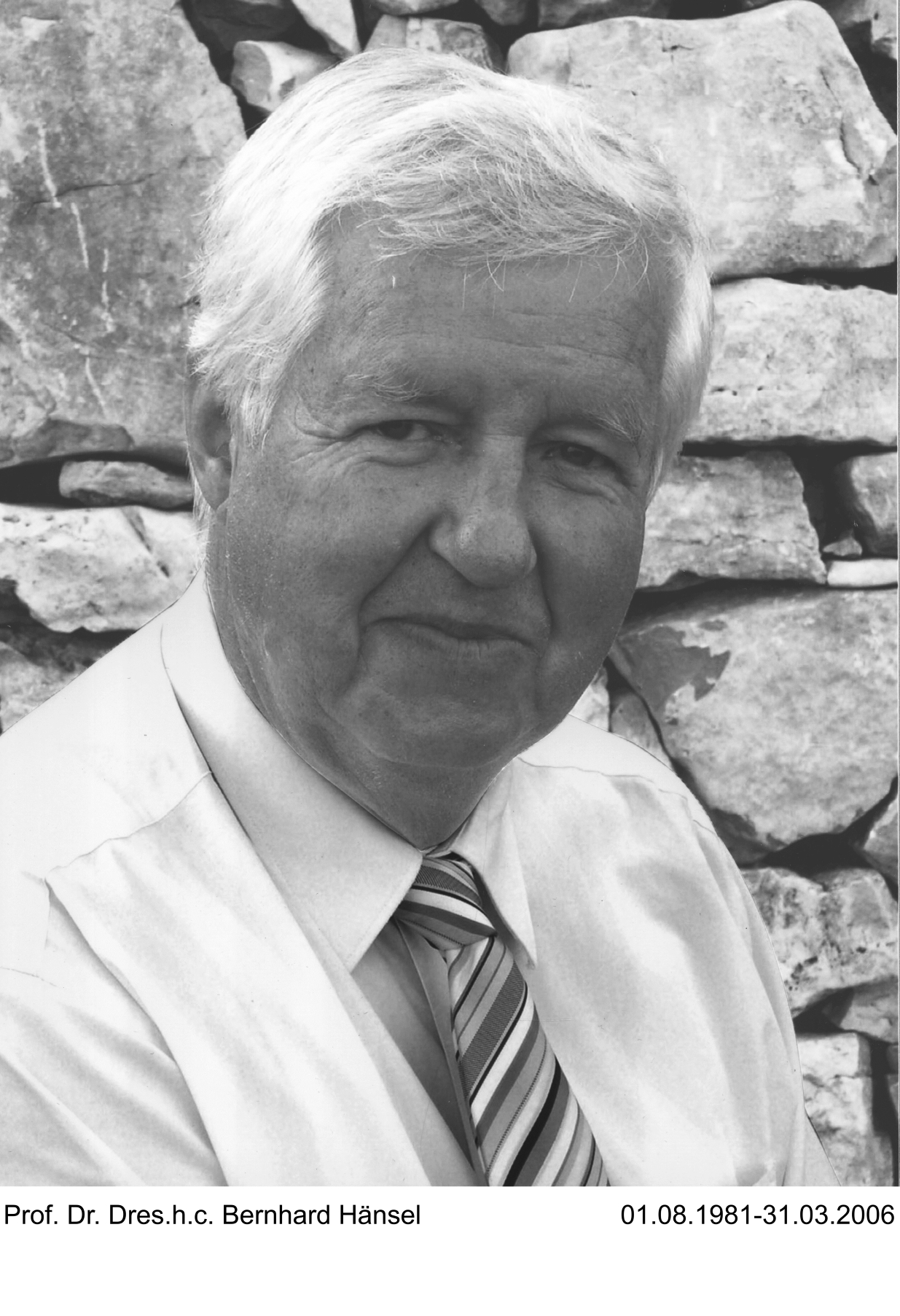We mourn the death of Bernhard Hänsel, one of the most important European archaeologists of the 20th century.
Bernhard Hänsel's academic work will continue to live far beyond his personal departure, due to his vast publication record and the ‘Berlin School’ that he founded. His research focus on the metal ages in the Carpathian Basin and South-Eastern Europe, already established at an early stage, led to fundamental studies that set standards in Balkan archaeology and beyond. His dissertation ‘Beiträge zur Chronologie zur mittleren Bronzezeit im Karpatenbecken’ (Contributions to the Chronology of the Middle Bronze Age in the Carpathian Basin, 1964, published in 1968) and his Habilitationsschrift ‘Beiträge zur regionalen und chronologischen Gliederung der älteren Hallstattzeit an der unteren Donau’ (Contributions to the Regional and Chronological Classification of the Early Hallstatt Period in the Lower Danube, 1972, published in 1976) are major contributions to this field. The series ‘Prähistorischen Archäologie in Südosteuropa’ (Prehistoric Archaeology in South-Eastern Europe, PAS), initiated and edited by Bernhard Hänsel beginning in 1982, has now been published in 30 volumes, which are based on his standards for basic archaeological research. This series includes the results of his own excavations, including his own writings, as well as comprehensive studies of his students on Balkan archaeology.

His great merit was in combining Gero von Merhart's established Marburg tradition of a material-based formal and chronological analysis with Vladimir Milojčić‘s Heidelberg tradition of archaeological research across borders into his own Berlin School. His basic approach included envisioning social and historical images of the past, for which he used all available sources. This approach is also reflected in his interdisciplinary excavations carried out since the 1980s. Geologists, geographers, geophysicists, archaezoologists and archaeobotanists were integrated in his excavation teams and included in the publications. It was not by accident that his historical interpretations of Bronze Age societies followed lines of disruption, which he used to establish decisive cultural changes. The exact knowledge of the material culture was his starting point, which he saw as a necessary prerequisite for every competent archaeologist and emphatically demanded and expected from his pupils.
After studying at the Humboldt University in Berlin, and subsequently Jena, Heidelberg and Vienna, a short period as university assistant followed in Heidelberg (1964), as well as a travel scholarship of the German Archaeological Institute (1965). His further career led him to Bochum as a university assistant (1966-1972) and to Erlangen as a lecturer (1973-1976), from where he received the call to the Chair for Prehistoric and Early Medieval Archaeology in Kiel (1976-1981). From his appointment to the Chair of Prehistoric and Early Medieval Archaeology of the Freie Universität in Berlin in 1981 until his retirement in 2006, he gradually expanded the Seminar for Prehistoric Archaeology into a dynamic centre in our field. His institute became a focal point for prehistorians and many international students, especially from South-East Europe. The successive generations of archaeologists trained by Bernhard Hänsel are active today, within Germany and many other European countries.
From 1982, Bernhard Hänsel was chief editor of the journal ‘Prähistorische Zeitschrift’, from 1985 of the journal ‘Mitteilungen der Berliner Gesellschaft für Anthropologie, Ethnologie und Urgeschichte’, from 1990 the journal ‘Vorgeschichtlichen Forschungen’ and from 1996 of the journal ‘Archäologisches Nachrichtenblatt’. From 1982, he founded the monograph series ‘Prähistorische Archäologie in Südosteuropa’ and in 1990, he initiated and co-edited the monograph series ‘Universitätsforschungen zur Prähistorischen Archäologie’. He was a member of the Südosteuropa-Gesellschaft, South-East European Commission of the Göttingen Academy of Sciences, the Römisch-Germanischen Kommission, the Berliner Wissenschaftlichen Gesellschaft and the Saxonian and Polish Academy of Sciences. From 1990 he represented prehistoric archaeology in the Central Directorate of the German Archaeological Institute.
In his academic work, Bernhard Hänsel followed his curiosity for historical developments in the Balkans, where he carried out large settlement excavations. After Kastanas in Northern Greece (1975-1976), excavations in Feudvar (Serbia) followed from 1986, which ended because of the Balkan wars. His investigations of the Toumba of Agios Mamas (Prehistoric Olynth, 1994-1996) in northern Greece were followed by excavations in Monkodonia, Istria (1997-2007). One of his earliest and – according to his own assessment – most significant excavations took place in Policoro (Basilicata), one of the oldest Greek colonies in Italy, in the late 1960s (1965-1967). His importance as a role model can probably be attributed to the high standards of his excavations and, above all, their extensive multi-volume publications. Bernhard Hänsel’s most impressive achievement is the publication of his excavations in addition to his diverse scientific commitments. After all, Bernhard Hänsel was primarily a university professor, who not only supervised a large number of MA and PhD students, but also regularly lectured to large classes. His keen interest in discussions and his engagement for his students characterised him as a great teacher.
Bernhard Hänsel was a great European archaeologist. He lives on in his writings and the academic work of his Berlin school and will not be forgotten.
Prof. Dr. Barbara Horejs
OREA Director, Institute for Oriental and European Archaeology, Austrian Academy of Sciences
Go back to top